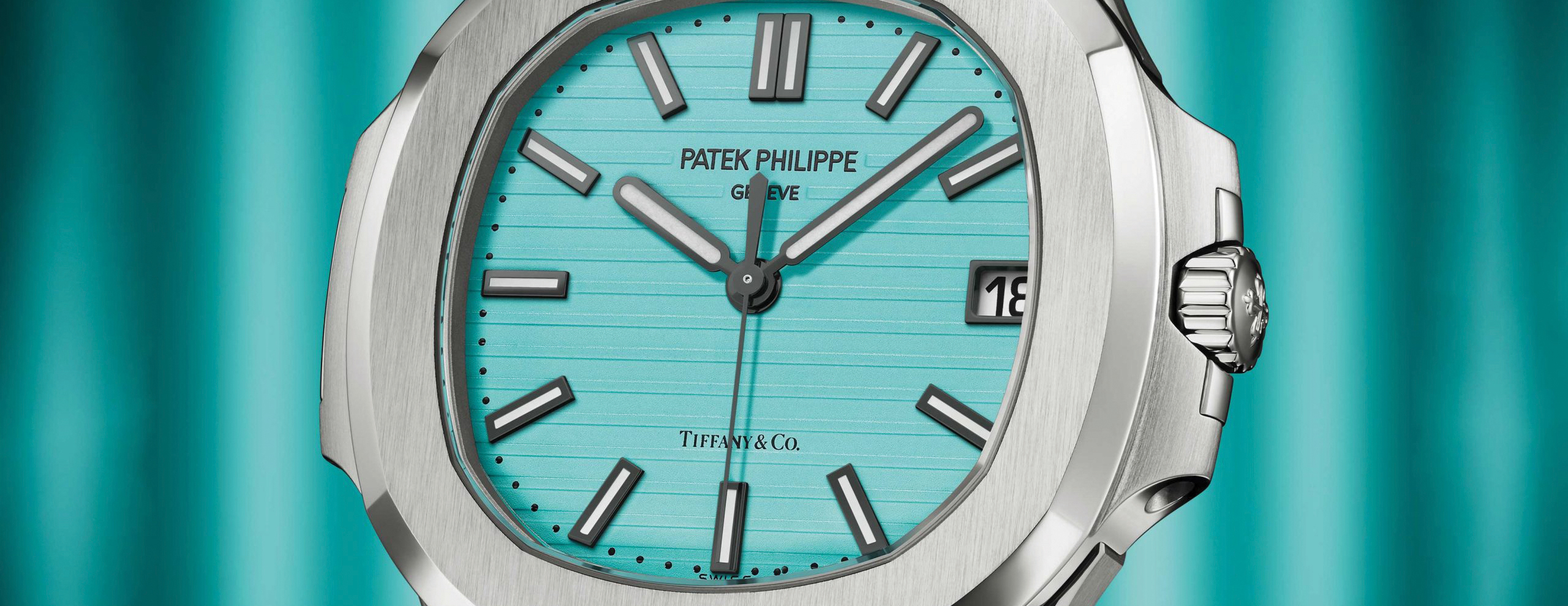News
Why is everyone crazy about Tiffany & Co. and Patek Philippe double-stamped dials?
News
Why is everyone crazy about Tiffany & Co. and Patek Philippe double-stamped dials?
Tiffany double stamped rose gold ref. 5711/1R-001 (Image: Phillips.com)
This was the first time the industry had ever seen the “1837 Blue” pantone color on a luxury watch. It must be noted that this was not a sign that Patek Philippe had fallen into the Tiffany-blue hype, but rather, a powerful nod to tradition, as the watches were also stamped by Tiffany, becoming the latest “double-stamped” collectible.
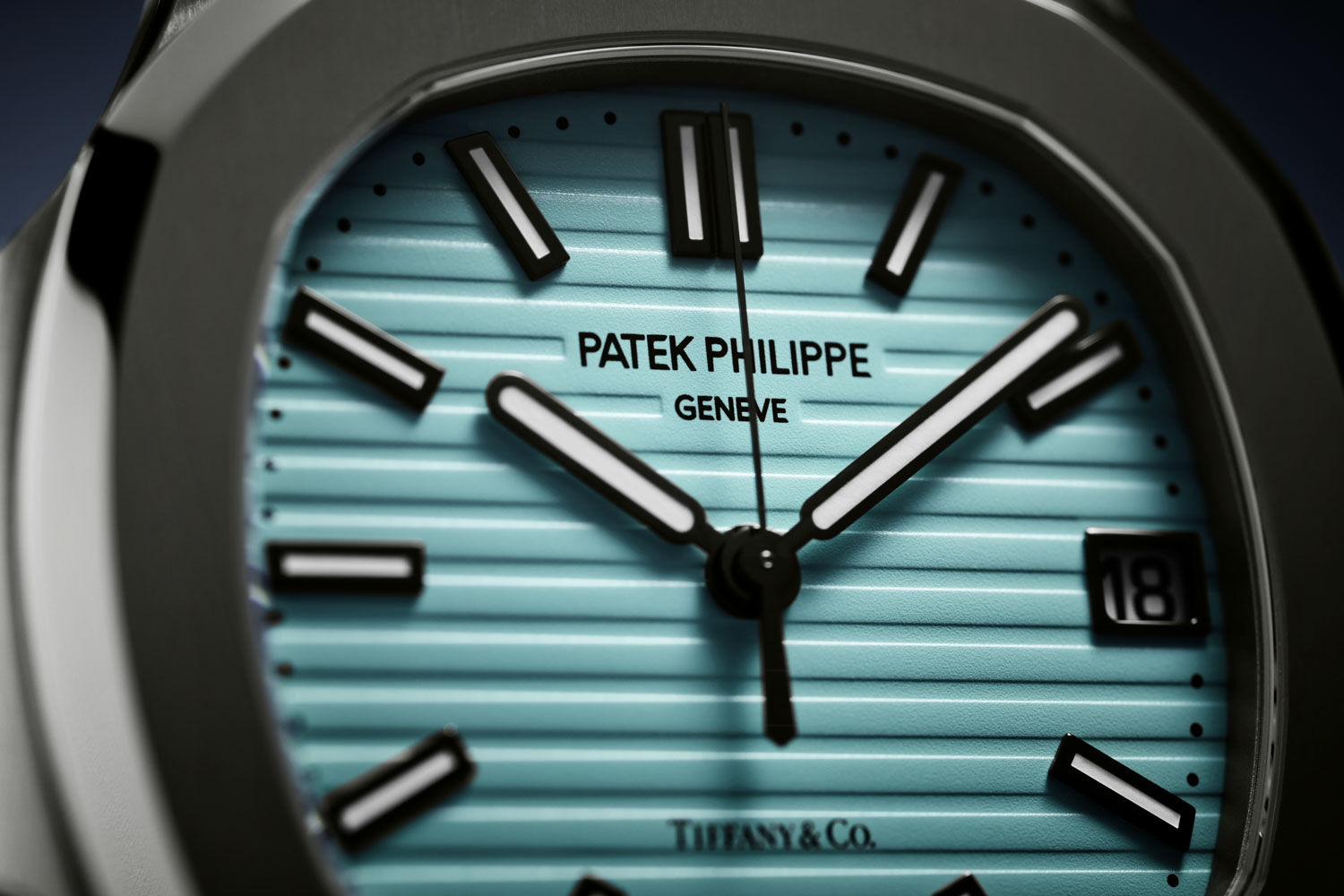
Ref. 5711/1A-018 “Tiffany & Co.”
The partnership that became the American Dream
Did you know that Tiffany & Co. and Patek Philippe were born within just 24 months of each other? The former was founded in 1837, in New York, by Charles Lewis Tiffany.
Two years later, Antoine Norbert de Patek and François Czapek co-founded Patek, Czapek & Cie. in Geneva, Switzerland. A disagreement between the two men would lead to Czapek’s departure in 1845, and the arrival of a young French watchmaker named Jean Adrien Philippe.
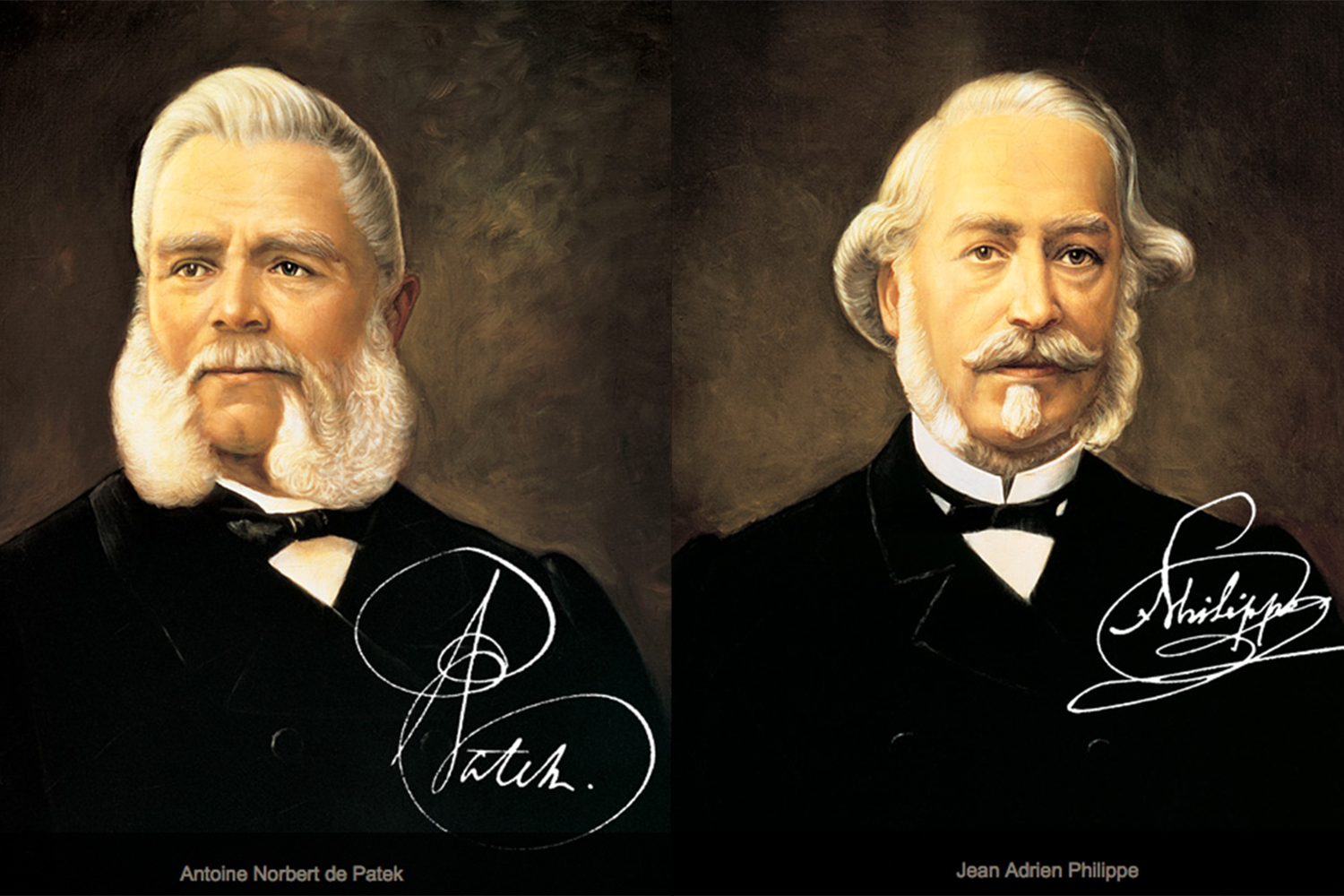
Antoine Norbert de Patek and Jean Adrien Philippe
While the technically gifted Philippe focused on the development of proprietary tools and the study of keyless mechanisms, Patek became consumed by the distressing state of the European economy following the revolutions of 1848.
In 1851, the company changed its name to Patek, Philippe & Cie., and Antoine de Patek started making plans to establish formal relationships with distributors in the United States, including Tiffany, Young & Ellis (the former name of Tiffany & Co. before 1853). The American retailer began selling Patek Philippe watches in 1851, but a formal agreement of partnership between the two companies was only signed in 1854 when Patek traveled to the U.S.
“Life in New York is very expensive,” he remarked in a letter dated December 15, 1854, just days after his arrival. The evening before, Patek had met Charles Tiffany for dinner, during which the two men had discussed many topics including the difficult times facing Swiss watchmaking, as well as American taste in watches.
“Mr. Reed [Gideon Reed, the resident partner of Tiffany & Co.’s branch in Paris] and Mr. Tiffany were very surprised to see me,” Patek continued. “Because of the general state of crisis, they cannot promise me to buy anything.” However, the dinner eventually led to a symbolic handshake and an agreement that solidified one of the most dependable relationships between two luxury houses.

Tiffany & Co. flagship store at New York Fifth Avenue
Tiffany would end up placing the largest order of Patek Philippe watches in the United States, and would later pursue a more exclusive agreement in 1876, specifying that the company would safeguard Patek’s interests “as if they were its own.”
Between 1900 and 1930, Tiffany & Co. helped Patek Philippe forge crucial ties with prominent American collectors. The Tiffany flagship boutique, opened in 1905 on Fifth Avenue, introduced some notable enthusiasts to the Swiss brand, including Henry Graves Jr., an esteemed figure within New York’s high society.
His collaboration with Patek Philippe resulted in some of the world’s most complex and expensive timepieces, culminating in the delivery of the Supercomplication in 1933, a pocket watch featuring 24 complications, including a celestial map of the Milky Way as seen from Graves’ Manhattan home at 834 Fifth Avenue.
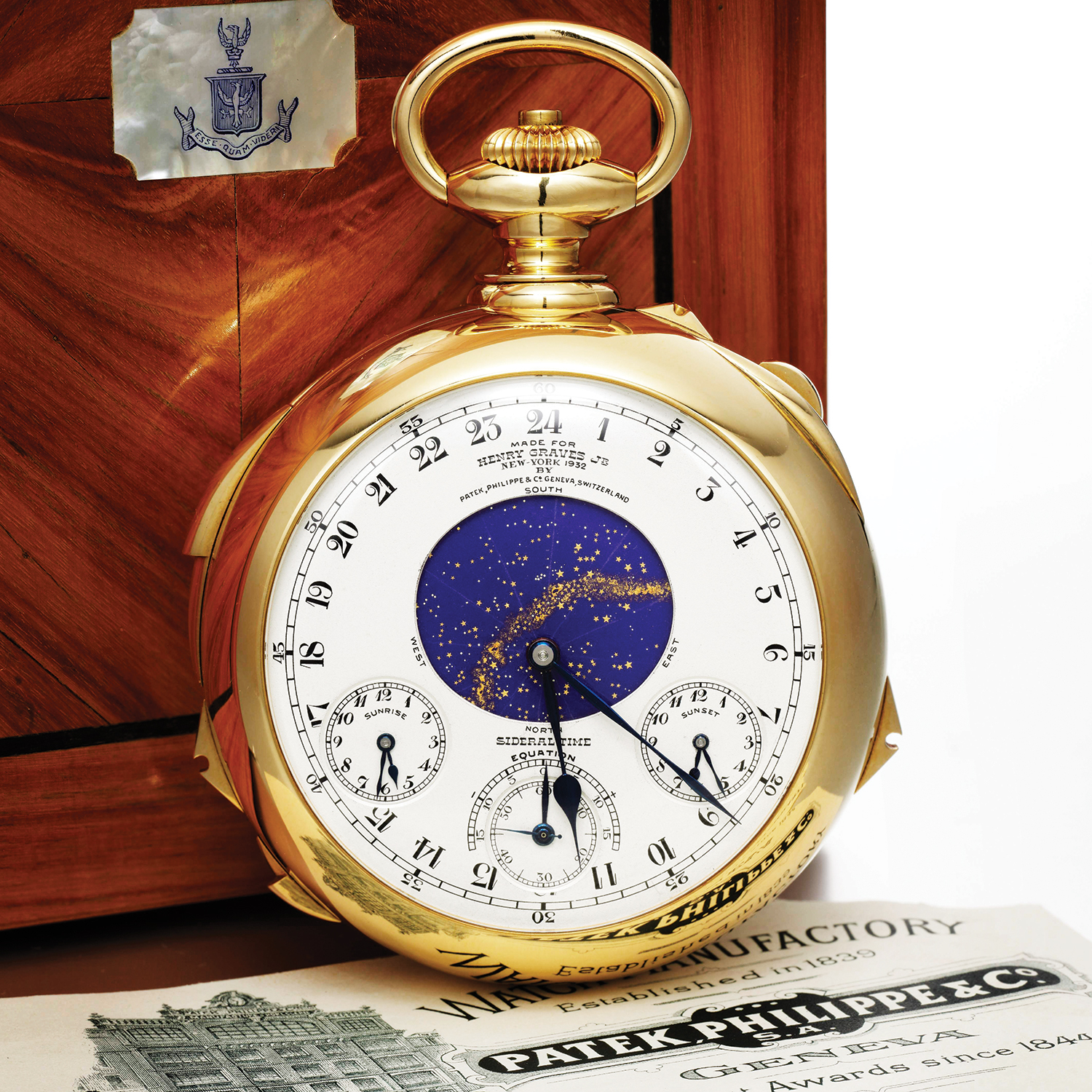
Patek Philippe Supercomplication by Henry Graves Jr.
Thanks to the relentless efforts of its globe-trotting founder, Patek Philippe developed an impressive distribution network all over the world. The brand worked not only with retailers across Switzerland (Beyer, Bucherer and Gübelin) and its European neighbors (Asprey, Hausmann & Co. and Trucchi), but also in South America (Serpico y Laino, Freccero and Cuervo y Sobrinos). However, its oldest retail partner is Tiffany & Co. in the U.S.
Patek Philippe’s name was no doubt becoming synonymous with high-end watchmaking, but in those countries where the stores were better known than the watches they carried, clients found reassurance in double-stamped pieces featuring the retailer’s name next to the watchmaker’s.
Tiffany’s prized signature
He writes, “In most cases, the retailer’s signature was applied during the fabrication of the dial by the company’s dial makers: Stern, or Singer, or Flückiger. This would happen last, as the final step and after the Zapon (the dial’s final layer) had been added.”
Patek Philippe’s relationship with Tiffany & Co. continued, when Henri Stern, the son of the maison’s new owners, moved to New York City in 1937 to run the company’s distributorship. With Stern’s presence, the companies grew closer. In fact, Tiffany’s historical support for Patek Philippe was rewarded when the retailer became one of the very few to receive permission to stamp Patek Philippe dials themselves, upon receiving the watches from Geneva.
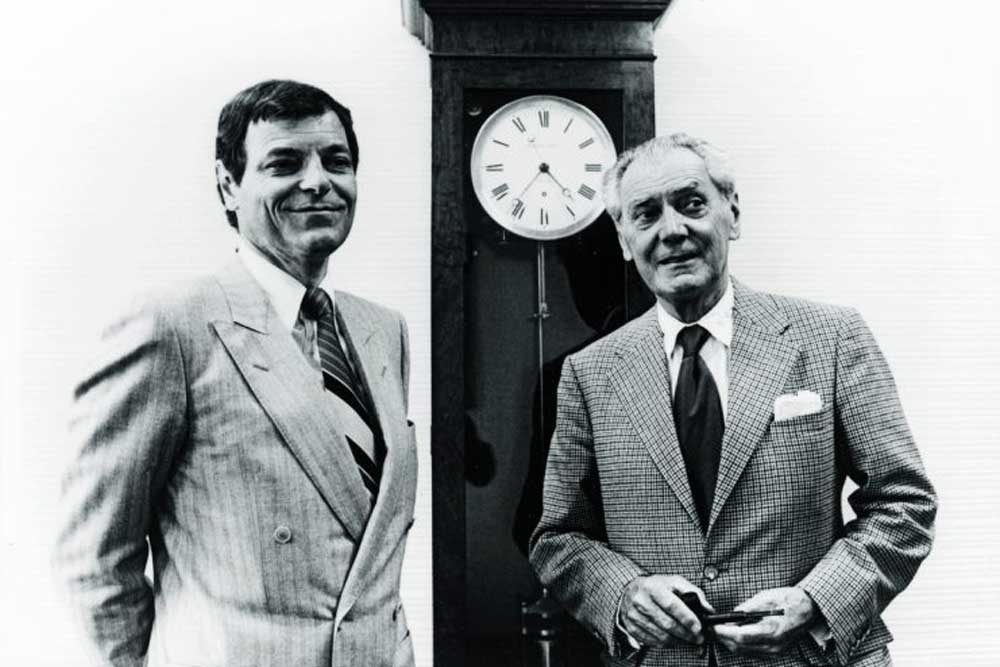
Philippe Stern (left) with his father Henri Stern, who had a fancy for perpetual calendars with linear displays.
Auro Montanari, also known by his nom de plume John Goldberger, calls it “a very powerful signature.” The renowned Italian collector and author is quick to point out that collectors are ready to spend a significant premium for it. Many are motivated by the rarity of these watches. Whether modern or vintage, Patek Philippe models produced serially are much harder to find with a retailer signature than without.
A quick look at some of the company’s most iconic references of the 20th century, pieces that would have been recommended to the most loyal and important customers, confirms their rarity.
Of the watches sold publicly at auction, less than five percent of Ref. 2499 models have a Tiffany & Co. signature. Less than three percent of Ref. 1463 have a Tiffany & Co. signature. And only a single example of the Ref. 1579 is known to exist with a Tiffany & Co. signature.
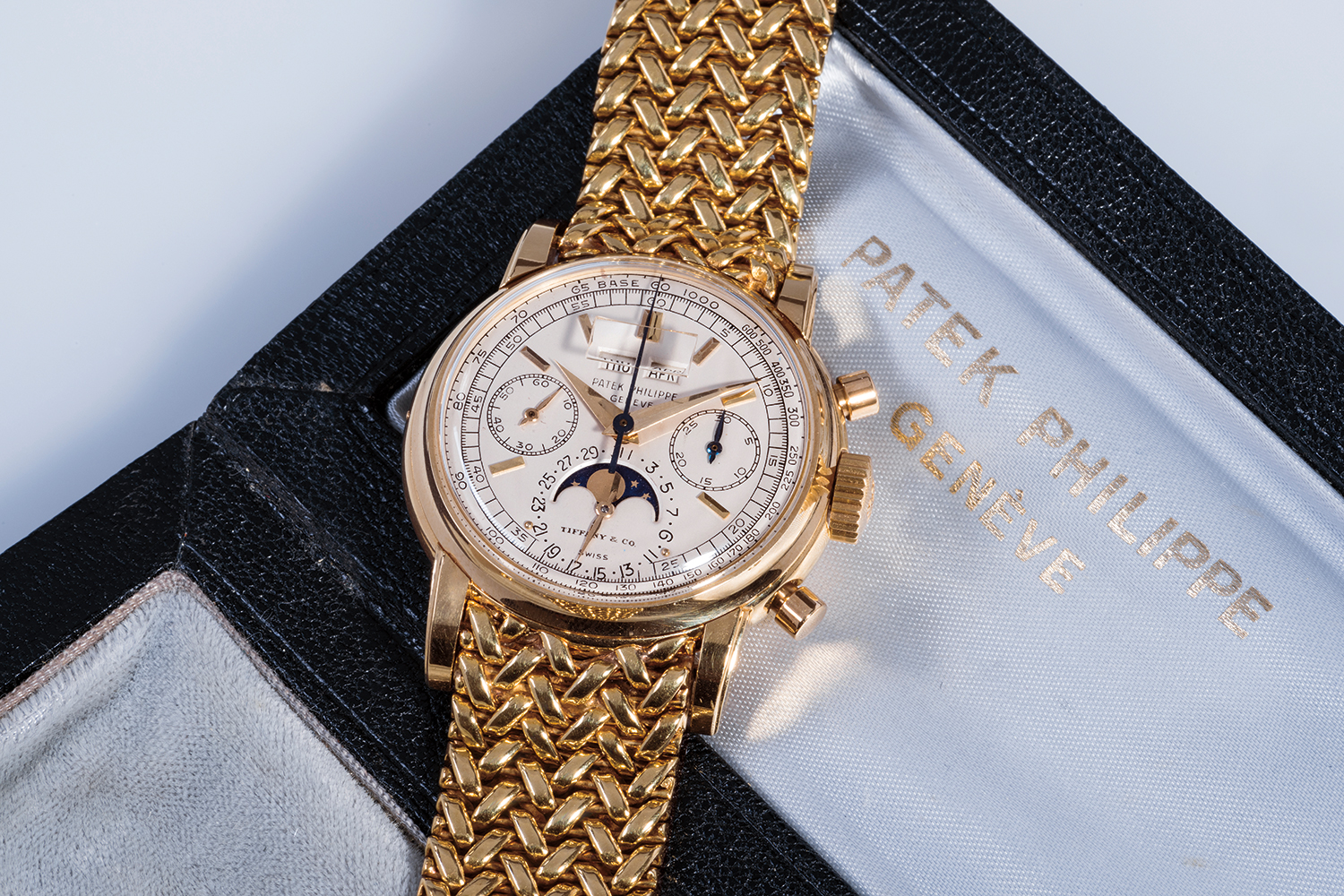
Lot 38 of the Geneva Watch Auction Five - A Patek Philippe Ref 2499 in yellow gold, with dial signed Tiffany & Co.

Roni Madhvani agrees with him. The luxury watch enthusiast has built an impressive collection of double-signed pieces over the past 30 years.
“Some may find this rather bizarre and odd,” says Madhvani. His attraction to such pieces is well-known on social media, earning him a large following. People are intrigued by these pieces, which reveal just enough for its new owner to know about the watch’s origins, but leave the rest of the story blank, ready to be filled by your imagination.
One wonders… who was the watch’s original owner? A local businessman? A traveling diplomat? Why were they drawn to this Patek Philippe? Did they already know about the brand? Or did the retailer recommend it to them?
And then, there are the myriad possibilities of what could have happened to the watch once it left the store. Where did it go next? How far did it travel? What experiences did it survive?
Those were some of the questions that ran through my head when, in 2019 Phillips held “Double Signed,” a thematic auction dedicated to such pieces. I handled many vintage Tiffany-signed Patek Philippe watches ahead of the Geneva auction, including a beautiful first generation Patek Philippe Ref. 2597. The stunning yellow gold watch, one of the first with a movement made specifically for international travel was born in 1961 and sold by Tiffany & Co. to one of its clients on February 20 that year.
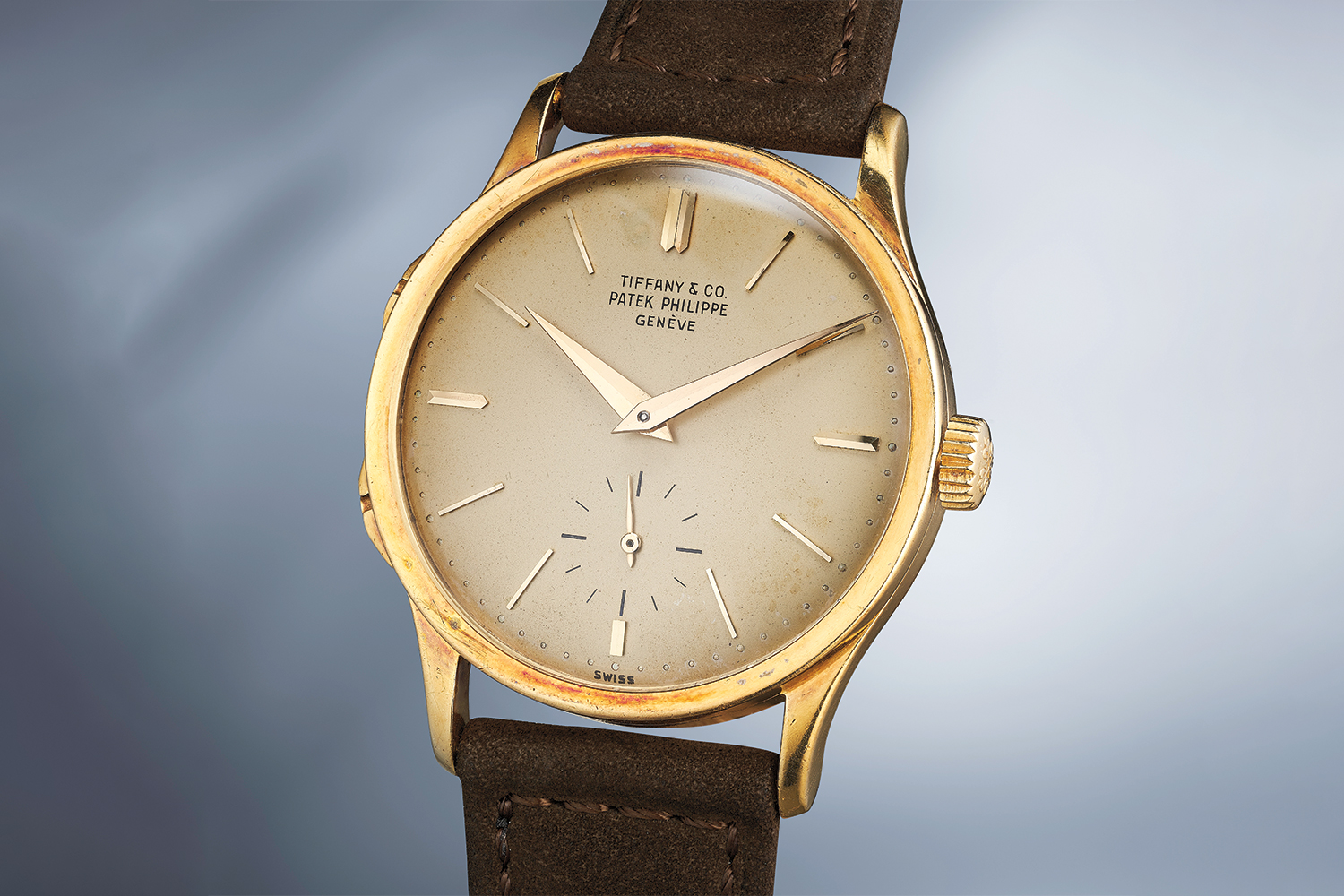
Lot 64 of the Double Signed thematic auction - A Patek Philippe Ref 2597 in yellow gold with dial signed Tiffany & Co.
“Double Signed” reunited more than 60 watches, most of them made and exported by Patek Philippe, to one of the brand’s international retailers. Incredibly, some were coming home for the first time since leaving the manufacture and we were able to answer some of the questions people had about them.
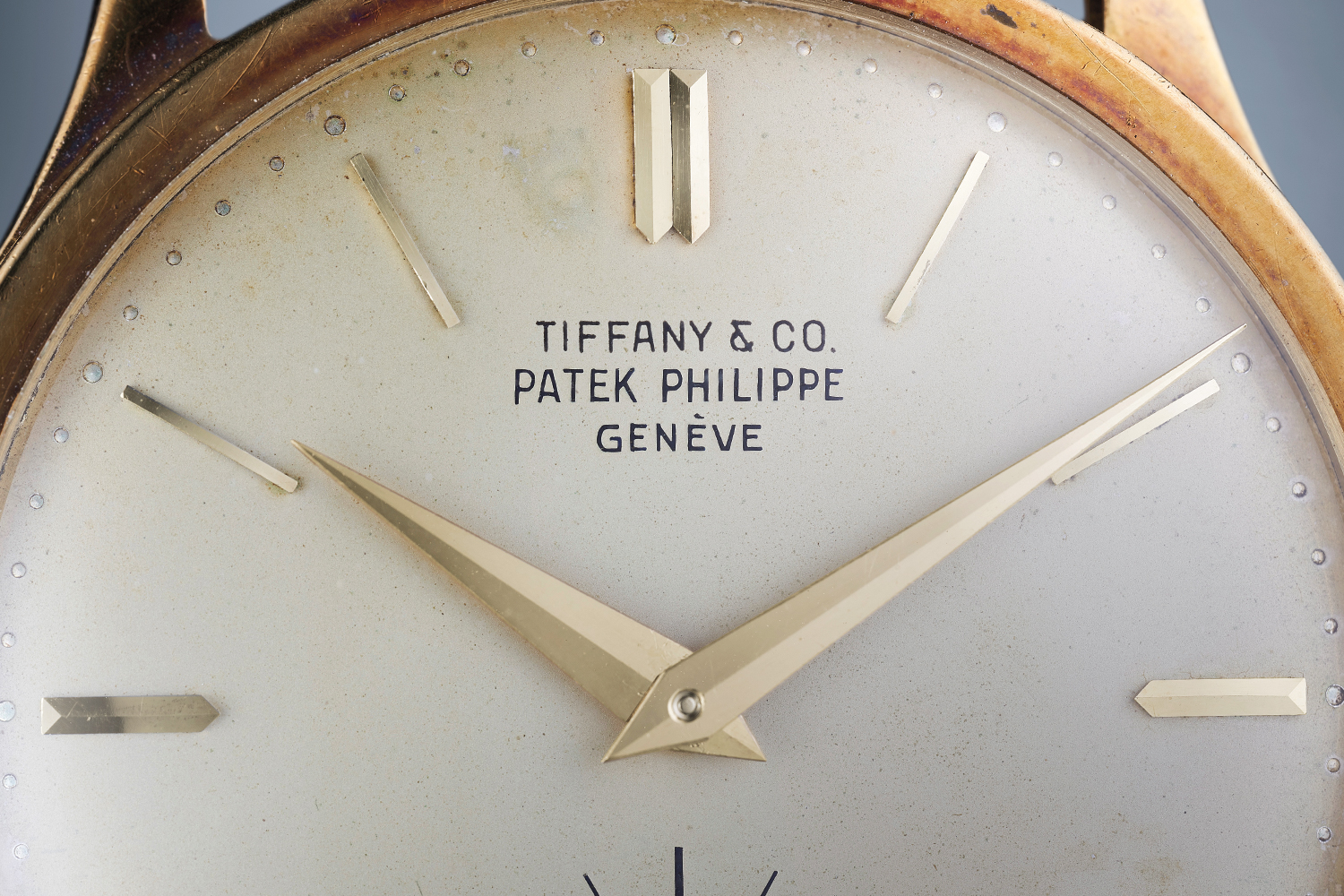
But there is also beauty in not being able to know everything. It’s what fuels collectors like Madhvani to keep searching for pieces worn in different corners of the world.
“This fascination has developed and evolved over my collecting lifetime,” he says. “From Havana, to Lima, to New York, these double-signed watches provide satisfaction on another, more emotional level.”
Patek’s and Tiffany’s enduring alliance
Today, very few of the names that have graced Patek Philippe dials remain in existence. And even fewer continue to offer double-stamped dials outside of rare anniversary pieces. That extra level of exclusivity is why some have become fascinated with modern Tiffany-signed Patek Philippe.
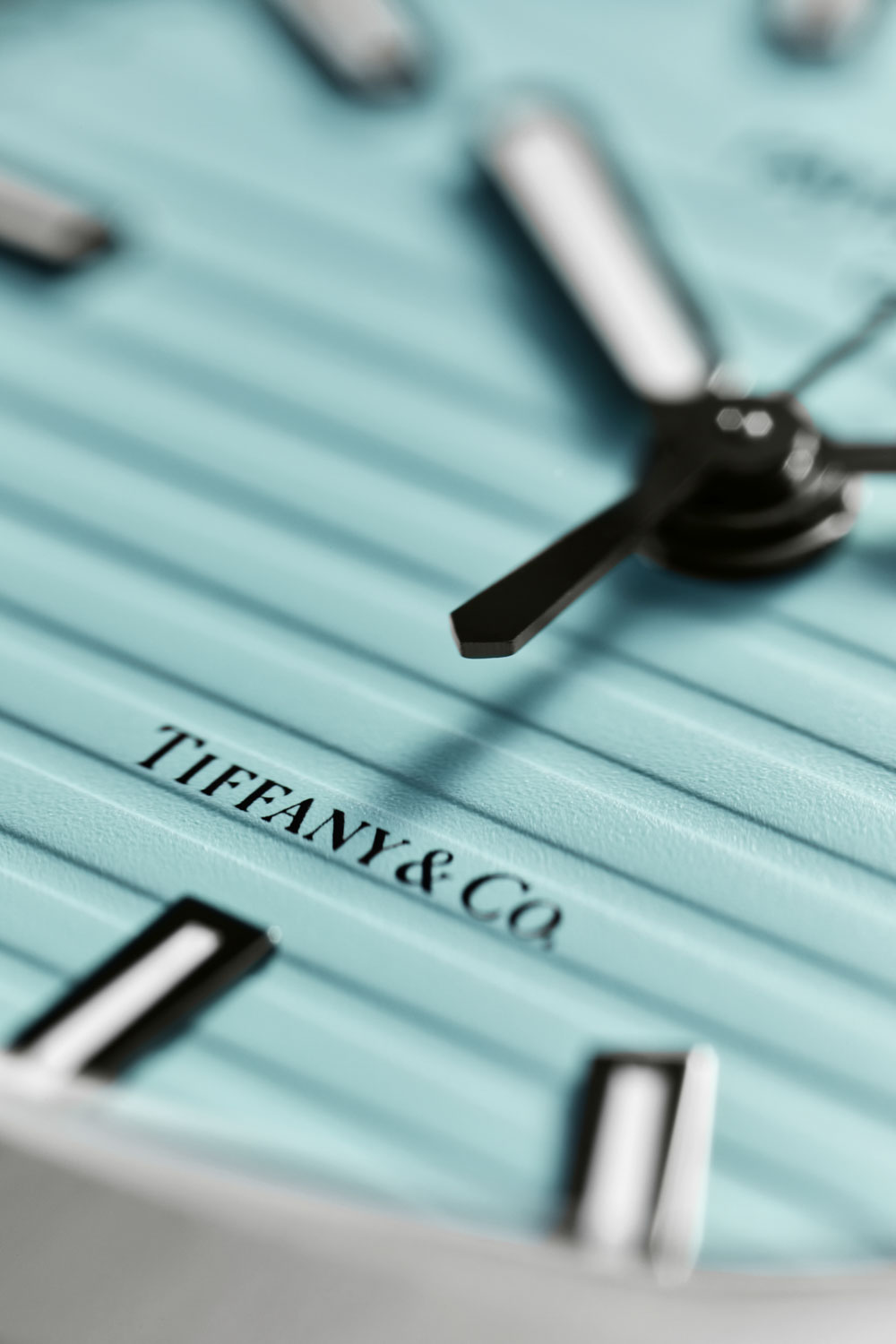
Ref. 5711/1A-018 “Tiffany & Co.”
“Thousands and thousands of people started to equate Tiffany & Co. dials with an extra layer of exclusivity, and the prices at auction for Tiffany dials quickly started to skyrocket,” says John Reardon, a vintage Patek Philippe expert and founder of Collectability.
Reardon credits one collector, Jasem Al Zeraei, for creating hype around the double-signed pieces. Al Zeraei is a Kuwait-based watch collector known for his affinity for modern Patek Philippe watches signed by Tiffany. Like Madhvani, he is very active on social media, where he posts watches from his collection under the handle @patekaholic.
“My attraction to the stamp is mainly in the pursuit of uniqueness and individuality,” says Al Zeraei, noting how difficult that is to achieve in today’s market. “To have that extra stamp offers that special feeling for what can otherwise be considered a ‘mass-made’ timepiece.”
Those 10 extra letters are “a lesson in marketing,” according to Al Zeraei, although a double signature was not always popular with clients. Reardon recalls when some 20 years ago, clients had very split opinions on these watches.
Says Reardon, “Clients of Tiffany & Co. would occasionally ask for new watches not to have Tiffany & Co. stamped on the dial. On one occasion, I remember asking a client why and the client said the retailer stamp was nothing more than extra ‘graffiti’ on the dial and that only Patek Philippe should be seen on it.”
Dr. Crott also prefers double signatures in older models and finds it difficult to understand the appeal of such dials in modern watches. “I think it is more logical and convincing that a signature is related to an event for the retailer,” he says.
Patek Philippe has made several anniversary pieces to celebrate its partners — including but not limited to Tiffany & Co. These pieces are made in very limited numbers and come with special design features.
The American jewelry retailer was first celebrated in 2001. For the 150th anniversary of their partnership, the two brands presented a special version of the Ref. 5150, an annual calendar with phases of the moon at six o’clock. Patek Philippe made the watch in three precious metals (yellow, pink and white gold), each one in 150 examples. The dial also featured a stylized “T” at 12 o’clock, in reference to the jeweler’s name, and an original display of the month.
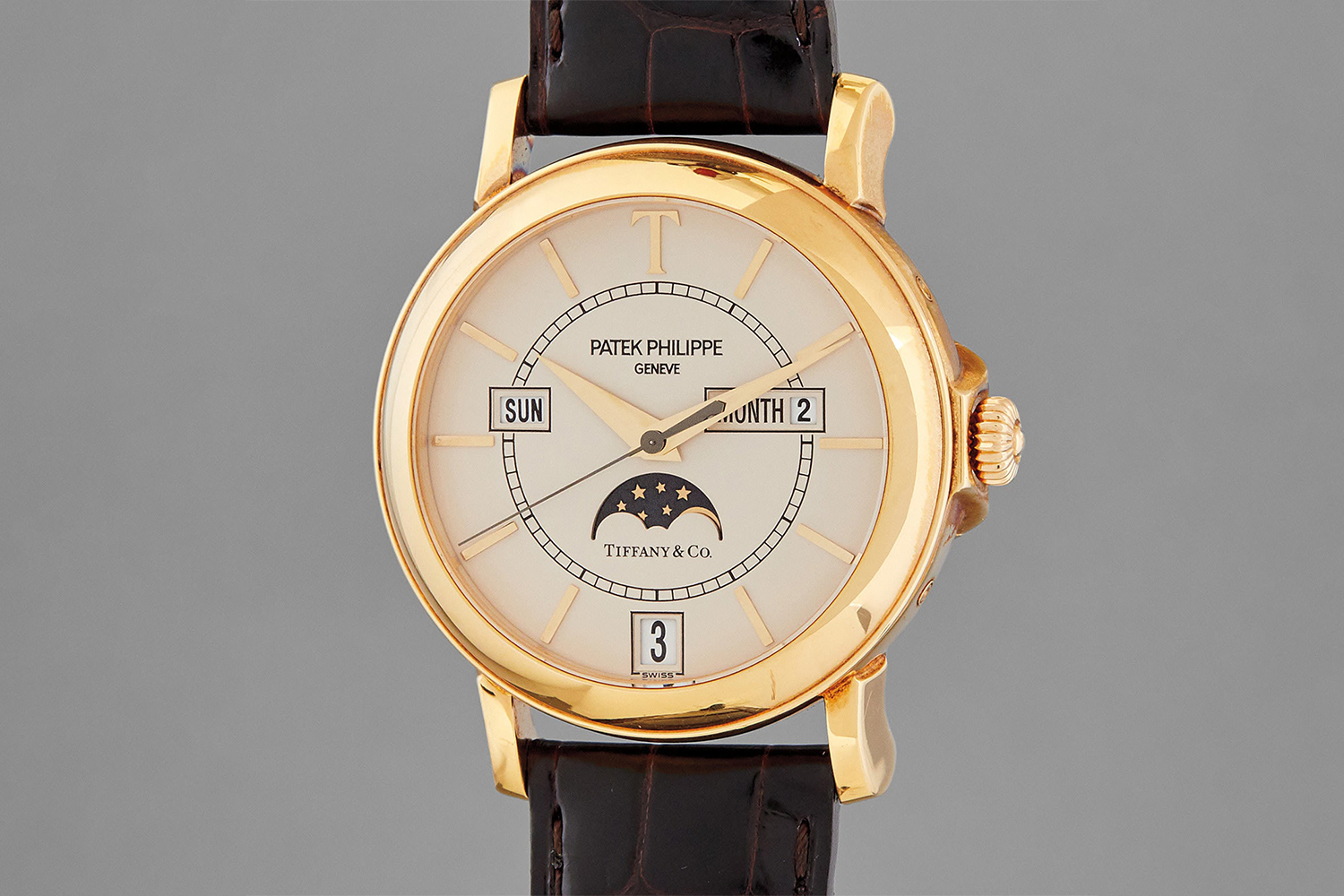
Patek Philippe ref. 5150 (Image: Philips.com)
Patek Philippe then launched several limited editions celebrating its boutique’s move to Tiffany’s Fifth Avenue address, including two tonneau-shaped Gondolo ladies’ Ref. 4987G watches in 2009, followed three years later by another two Ref. 4987G timepieces and a special Ref. 5396G.
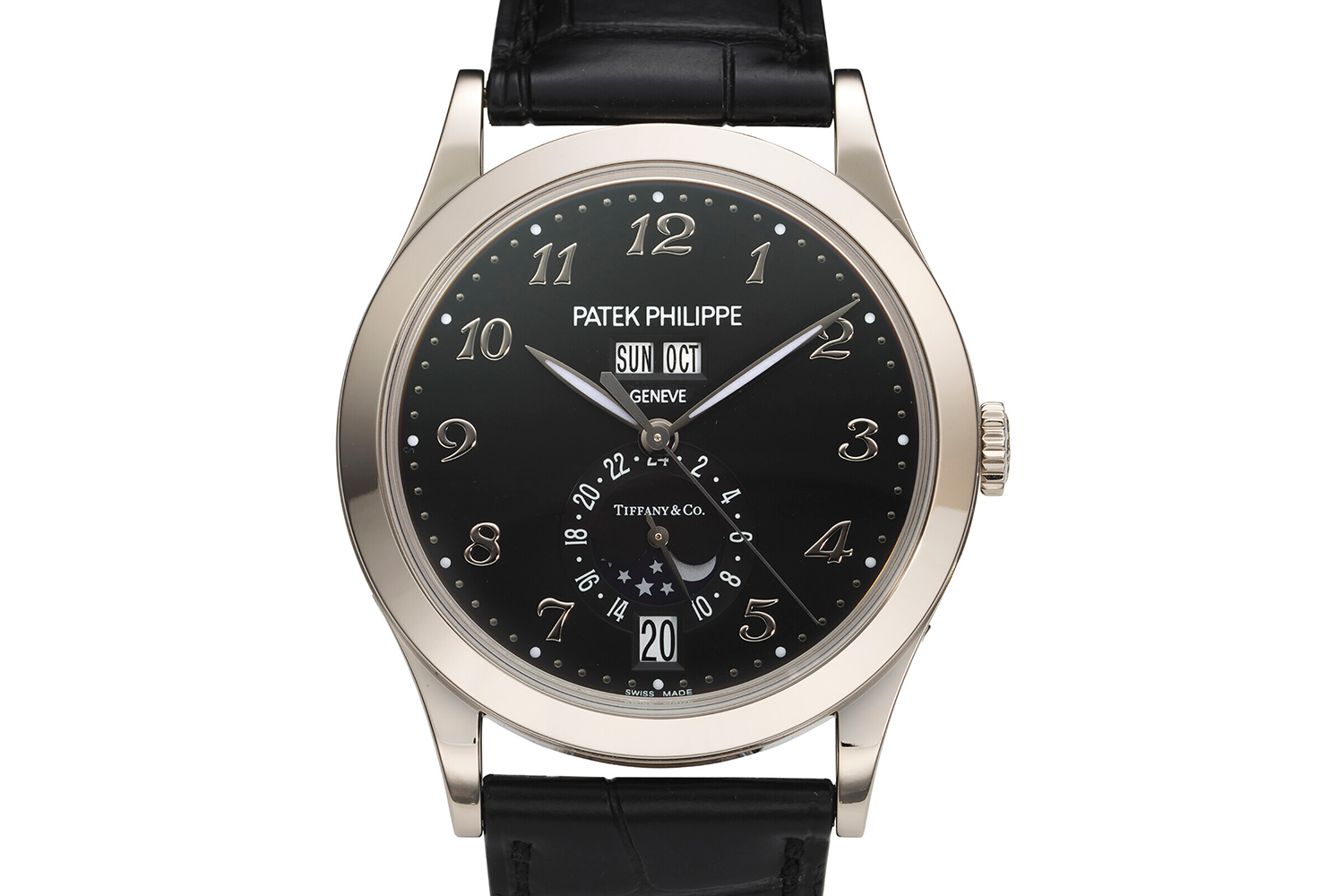
Patek Philippe ref. 5396G-01
The round annual calendar Ref. 5396G, a limited edition of only 100 pieces, featured luminous hands, a black dial fitted with gold applied Breguet numerals, special engraving at the back and, of course, the Tiffany and Co. stamp — elements that distinguish it from the regular model. The watch was a hit outside of Tiffany’s regular clientele and became highly sought-after as an investment piece.
Less than 10 years later, the 170-piece Tiffany-blue Ref. 5711 would become the greatest symbol of Patek Philippe and Tiffany’s marketing power. For access to one of the pieces, collectors would have to be a historical client of Tiffany & Co. or be named Jay-Z, Leonardo di Caprio, LeBron James or Ed Sheeran, or would have to spend several millions of dollars above retail for one of the rare pieces sold at auction.
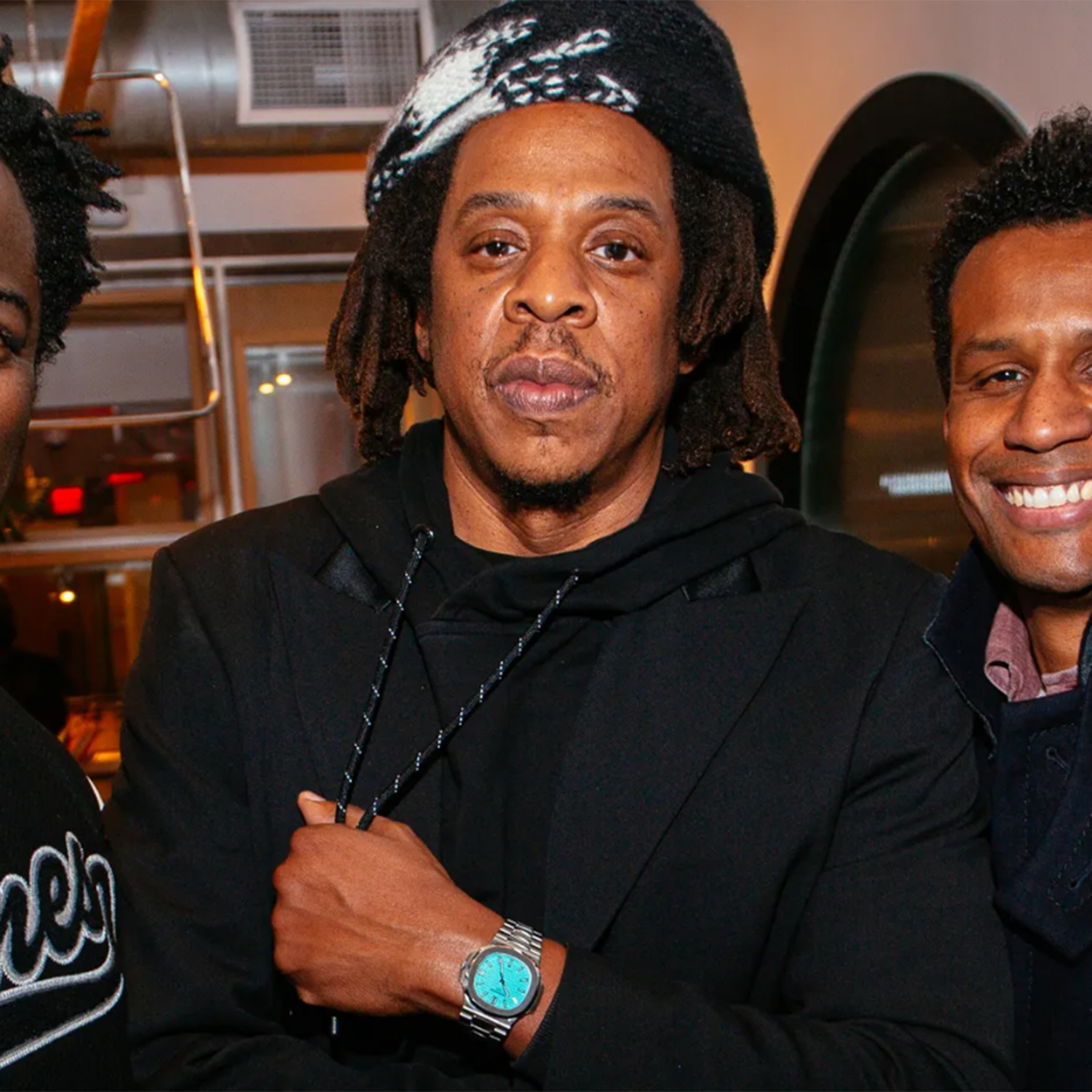



Finally, it goes without saying that the relationship between Patek Philippe and Tiffany & Co. is a very special one. Its longevity is impressive and it has survived the best and worst of the past over 170 years, including global recessions, two world wars, and a full-blown identity crisis following the introduction of quartz in the watchmaking industry.
Through it all, the brands’ aims have shifted. What was once a mutually beneficial business partnership, meant to expand one brand’s reach and another’s revenue, has outgrown its original purpose.
Patek Philippe no longer needs Tiffany & Co. to sell its watches in North America, while the watches sold by Tiffany & Co. represent a rather thin slice of its billion-dollar luxury business.
Yet, like an anchor in the storm, the agreement found by Patek Philippe and Tiffany & Co. back in 1854 continues to bring both brands joy, as proudly displayed on the double-stamped watches offered to the U.S. retailer’s best clients.
About Arthur Touchot
Arthur Touchot is a well-known figure in the world of luxury watches and a seasoned professional in the watch industry. He is currently the Head of Digital Strategy & Watches Specialist at Phillips Watches and is also an Academy Member of the Fondation du Grand Prix d’Horlogerie de Genève.




